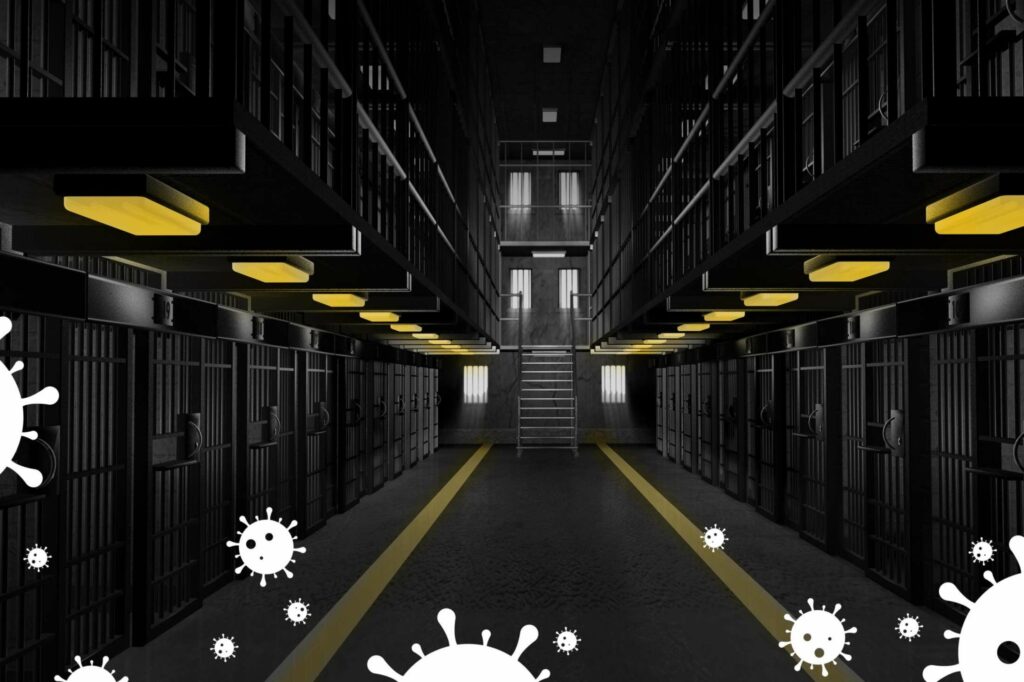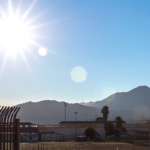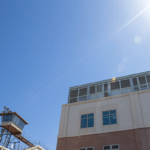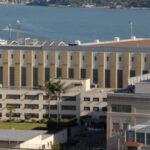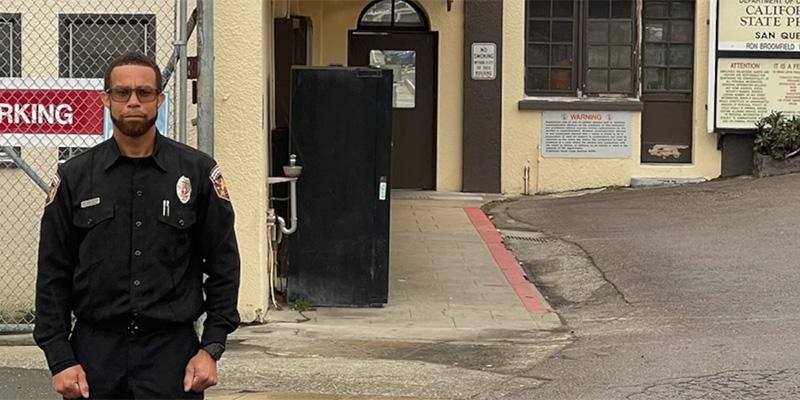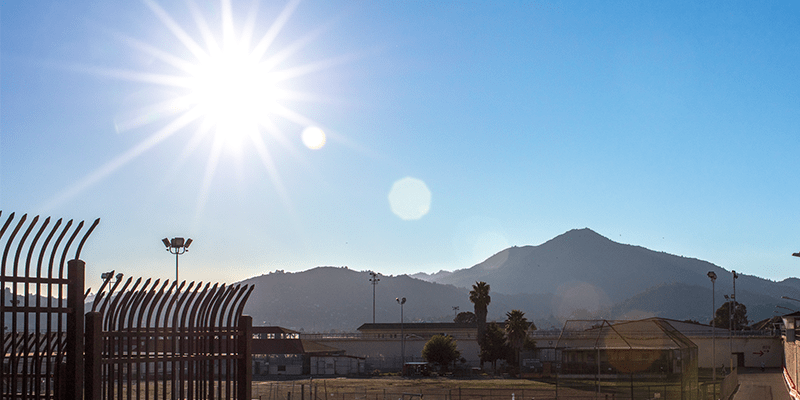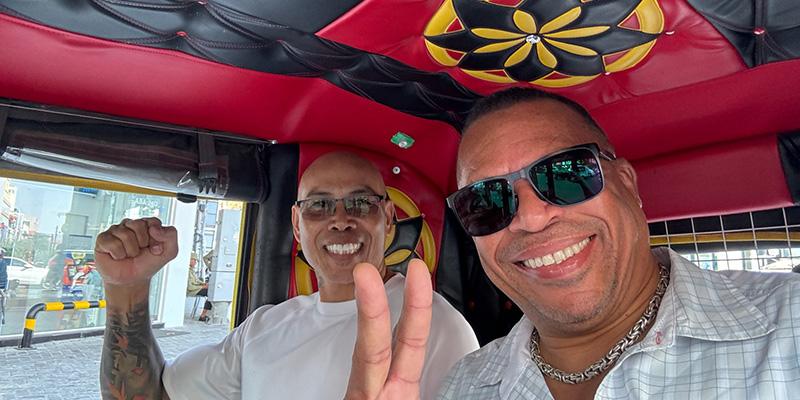This article originally appeared in the San Francisco Chronicle on October 9, 2021. Read story.
On June 27, 2020, a guard came to my cell at San Quentin’s North Block to tell me that I tested positive for the coronavirus. Later that day, I was ordered to pack up my belongings and herded to South Block along with 62 other infected prisoners — part of a scramble that one infectious disease expert would later describe as “reckless.” The virus spared my life, but killed 28 prisoners and a beloved correctional sergeant. A court would later call it “the worst epidemiological disaster in the history of California corrections.”
As the disease spread throughout the prison, more than 300 San Quentin residents filed a lawsuit asserting that the state’s mishandling of the virus violates their Eighth Amendment protection against cruel and unusual punishment. The case is making its way to the California Supreme Court.
I am one of the plaintiffs.
On May 30, 2020, John Dean Mattox, 63, was put on a bus at California Institute for Men, commonly known as Chino, for an 11-hour ride to San Quentin. Before boarding the bus, he told Chino prison officials that he had COVID-19 symptoms.
I’m a reporter with San Quentin News, a newspaper produced by incarcerated journalists inside the prison. Shortly after Mattox got to San Quentin, he told me in an interview that Chino officials said, “Tell it to medical when you get there.”
Court papers and independent reports show that some of the 122 prisoners on the Chino buses, Mattox among them, were already infected. In later court testimony, Mattox would recall that passengers were tired, but couldn’t sleep with masks on, so some pulled them down. Several were coughing. When they reached San Quentin, Mattox said they weren’t screened for COVID-19. Nevertheless, he informed medical staff that he had COVID-19 symptoms. Two days later, a nurse tested him. After the results came back, she told Mattox that he was “the first inmate to have the disease of COVID” at San Quentin.
A couple of weeks later, infectious disease experts from UCSF toured San Quentin. The experts wrote an “urgent memo” explaining that San Quentin is “an extremely dangerous place for an outbreak” and urged, “everything should be done to decrease the number of people exposed to this environment as quickly as possible.”
The team recommended that prison officials halve its prisoner population “to allow every cell in North and West Blocks to be single-room occupancy” and to allow leadership at San Quentin to prioritize which units to depopulate further, “including the high-risk reception center (South Block) and gymnasium environments.”
North Block (414 cells) and West Block (449 cells) were identified as the most vulnerable to contagion. They are enclosed and unventilated buildings with outer windows welded shut. Each block has five tiers of windowless cells that are roughly 4-feet wide and 10-feet long — smaller than the average parking space. The cells are furnished with a stainless-steel sink and toilet. Each cell has bunk beds to accommodate two people.
There are bars on the cell front doors, allowing air to circulate freely from one cell to the next.
In October 2020, a California Appeals Court declared that “in the face of this pandemic, which appears to take its greatest toll among older individuals and in congregate living situations, and in an aged facility with all the ventilation, space, and sanitation problems referenced in the Urgent Memo, (prison officials’) failure to immediately adopt and implement measures designed to eliminate double celling, dormitory style housing and other measures to permit physical distancing between inmates is morally indefensible and constitutionally untenable.”
The prisoners were not the only ones endangered.
In February, Cal/OSHA, the state body that regulates occupational safety and health, fined San Quentin $421,880 for “willful” violations of worker protection. “San Quentin staff were not provided adequate training or equipment for working with COVID-19 infected individuals, and employees who had been exposed to COVID-19 positive inmates were not provided proper medical services, including testing, contact tracing and referrals to physicians or other licensed health care professionals.”
The family of Sgt. Gilbert Polanco, who died from COVID-19, filed a lawsuit against the California Department of Corrections and Rehabilitation. News reports said that although he suffered from diabetes, leaving him vulnerable to COVID-19, as a duty bound public employee, he continued to work — even double shifts.
Marin County Superior Court Judge Geoffrey M. Howard was appointed to oversee a reduction of the prisoner population, but during a Nov. 30, 2020, preliminary hearing, prison officials said that they “did not intend to comply” with a reduction order.
The Corrections Department has a combative history with the courts. It took nearly 20 years of litigation before U.S. Supreme Court, in its 2011 ruling in Brown v. Plata, ordered the state to reduce overcrowding, saying that it had grown so severe that one prisoner a week was dying of treatable conditions. More than a decade later, the department remains under receivership because it cannot maintain the population level set by the U.S. Supreme Court, which is a generous 137.5% of designed capacity.
Almost a year from the date of the UCSF experts’ urgent memo, an evidentiary hearing was held to give the California Supreme Court relevant facts to make a final ruling.
I watched as masked Judge Howard was Zoomed into San Quentin’s Protestant chapel. Dozens of the more than 300 prisoner plaintiffs sat alongside with me to watch 11 days of testimony from their fellow prisoners, medical and mental health experts as well as prison officials, including the acting warden, Ronald Broomfield, who Gov. Gavin Newsom has since officially appointed warden.
Broomfield told the court that he could not have refused the transfer of prisoners from Chino to San Quentin. He said that he had concerns about receiving prisoners from “an outbreak institution,” but he testified that he “had no knowledge that prisoners were exposed to someone with confirmed cases of COVID-19.” He acknowledged that the transfers from Chino were not immediately tested upon arrival.
Officials say that since the outbreak is over, and San Quentin is getting vaccinated (87% of prisoners and 60% of staff as of September), there is no need to reduce the population.
The department also says it is prepared for future outbreaks thanks to its “Surge Mitigation and Management Plan,” which includes putting tents on San Quentin grounds as well as opening up its churches and furniture factory for additional bed space that would allow more social distancing. The plan increases testing and contact tracing procedures. It calls for isolating coronavirus-infected prisoners in cells with solid doors and provides an unlimited supply of N-95 masks and surgical face coverings for every prisoner and guard.
This plan may soon be put to the test.
Since the evidentiary hearing, six people tested positive for the coronavirus in San Quentin, and there have been outbreaks of two unrelated but miserable infections, norovirus and cryptosporidium, according to memos issued by the San Quentin medical department and hearing testimony.
The prison responded by reinstating the lockdown imposed in the spring of 2020. Most prisoners were allowed out of their cells only every other day, one tier at a time, for 90 minutes with an option to shower in one of the racially segregated community showers, and/or go to the prison yard, and/or make a 15-minute telephone call.
Under normal conditions, prisoners may spend the majority of the day outside of their cells. Cell doors first open at 6 a.m. and don’t permanently close for the night until 8:30 p.m. During open times, prisoners make their way around the prison to educational, substance abuse and support service jobs as well as the yard for recreation. Telephones are available from 7 a.m. through 8:30 p.m.
Prisoners were kept in lockdown for 14 days.
Inspector General reports and testimony by prison officials show that the Corrections Department and its medical staff knew San Quentin conditions were dangerous before the COVID-19 outbreak. Prison officials ignored their own guidelines, which would have required a negative test before the transfer, and testing and quarantining of the transferred prisoners when they arrived at San Quentin.
Dr. Meghan Morris, an expert in infectious disease epidemiology, testified in court proceedings that the pandemic was “a textbook outbreak that can be traced back to a single event, which is the transfer of individuals from CIM without testing, quick testing, and appropriate isolation and quarantining.” She deemed the state of affairs “reckless.”
One of the men watching the video of the hearing in San Quentin’s chapel was Andrew Lee Hildreth, 38. He was among those transferred in from Chino and contracted COVID-19 sometime along the way. Hildreth told me he felt an unexpected level of “comfort and closure.” He found the testimony of witnesses defending the Corrections Department’s actions “so lacking in compassion” that the net effect was “just about a direct admission of guilt.”
I admit I felt similarly. Even as a journalist, trying to remain objective as I reported what I saw in San Quentin, it was not hard to become emotional. Writing about people I knew who died from the virus — particularly well-liked men like Michael Hampton and John Stevens — was devastating. I was at Mike’s wedding and every time I went to church, he was there to give me a big hug.
Sgt. Polanco’s death, too, affected me. He just isn’t missed by his co-workers, but also by some of the men in blue, who he counseled, gave support during rehabilitative programs and debated sports trivia with.
COVID-19 admittedly presented unprecedented challenges to preserving health and safety inside San Quentin. But after reporting on the spread of the disease, and suffering from COVID-19 myself, it’s impossible not to feel these losses were needless and born of a failure to grasp the deadly consequences of merging mass incarceration with COVID-19.
The Marin County Public Defender’s office called me to testify about the conditions in North Block. On cross-examination, the Corrections Department’s lawyer asked me if I thought things at San Quentin were better. The record doesn’t reflect all of what I wanted to say: “I’m in 3 feet under water and I’m drowning. Then, you let me up 2 feet to say things are better. No! I’m still drowning. I’m drowning because of overcrowding.”
Many of us inside San Quentin are doubtful that significant change is coming, but at least the hearings in our case amount to a dose of public accountability.
San Quentin’s population, which fell slightly in the COVID spring of 2020, has begun to grow again as buses continue to arrive.
Juan Moreno Haines is an incarcerated journalist who has been a member of the Society of Professional Journalists since 2015. In 2020, the California News Publishers Association awarded him a first-place prize for coverage of the pandemic fallout. This story is supported by the PEN America Writing for Justice Fellowship.
